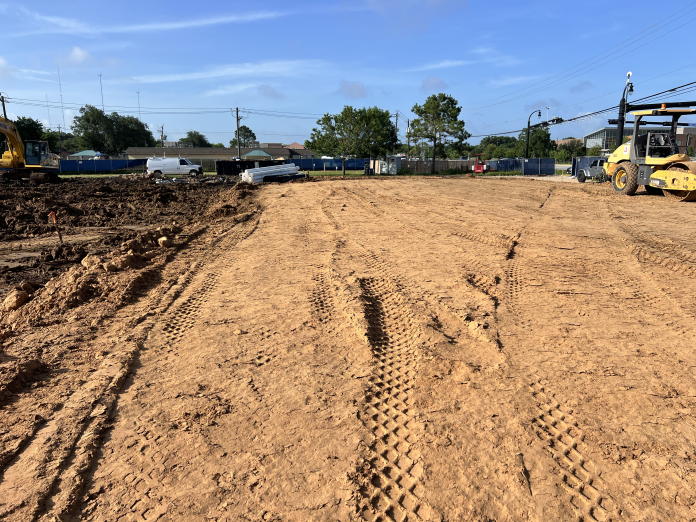A building pad is a prepared space of compressed soil that serves as the groundwork for a building’s foundation. This step is essential in preparing a site, as it guarantees a solid and even base for the structure. Building pads are commonly made by digging into and compacting the current soil or by bringing in and pressing down fill material.
Purpose:
Stability:
Building pads offer a consistent and flat base, which helps to keep the building from settling or moving over the years.
Drainage:
A well-prepared building pad aids in directing water away from the foundation, which helps to avoid water-related damage and structural problems.
Level Surface:
The pad offers an even surface for both the foundation and the building itself, facilitating smoother and more effective construction.
Foundation Support:
It is constructed to bear the weight of the building and its foundation, evenly distributing the load to prevent uneven settling.
Preparation:
Clearing the Site:
The initial step is to clear the area of any plants, stumps, and other organic materials that may break down and lead to future issues.
Grading and Leveling:
Next, the soil is graded and leveled to form a relatively flat area. This might include digging out low spots and filling in higher areas.
Compaction:
The soil undergoes compaction to boost its density and stability, typically using heavy equipment like bulldozers and rollers.
Soil Testing:
Tests may be conducted on the soil to assess its suitability for construction and to spot any possible problems that should be tackled during the preparation of the pad.
Considerations:
Soil Type:
The kind of soil at the site will affect the building techniques used and the required level of compaction.
Drainage:
Effective drainage is vital, and the pad should be designed to slope away from the structure to avoid water accumulation around the foundation.
Building Codes:
Building codes might set minimum standards for building pads, including soil types, required compaction levels, and drainage guidelines.
Professional Assistance:
For the majority of construction endeavors, it is advisable to collaborate with a skilled contractor who has expertise in constructing building pads.


